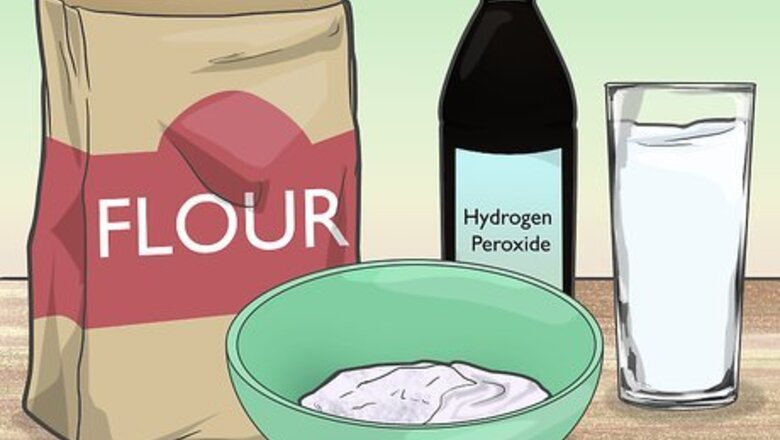
views
- Add 2.5 tbsp (20 g) of flour, 1 US tbsp (15 mL) of milk, and 2 US tbsp (30 mL) of 3% hydrogen peroxide to a large bowl and mix them into a paste.
- Add a few drops of water to the paste to make it easily spreadable. Then, apply the paste to your face with your fingers or a beauty brush.
- Wash the paste off your face with warm water after 10 minutes, then dry your face with a towel. Use the mask once a week for a month.
Face Mask Cream
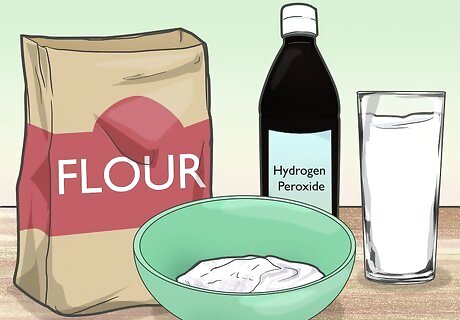
Add flour, milk, and 3% hydrogen peroxide to a plastic bowl. Measure 2.5 tbsp (20 g) of flour, 1 US tbsp (15 mL) of milk, and 2 US tbsp (30 mL) of 3% hydrogen peroxide, which you can buy at your local drug store. As you measure out the ingredients, add them to a plastic container. Try to get your measurements as exact as possible. Hydrogen peroxide is a powerful bleaching agent, and it might irritate your skin if it’s not balanced out by the milk and flour. Milk hydrates your skin and may exfoliate away dead skin cells to reveal more youthful skin.
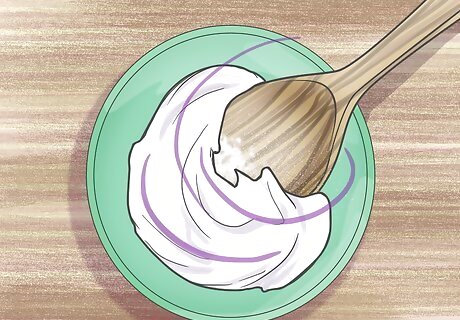
Stir the ingredients into a paste with a plastic spoon or wooden spatula. Use a plastic spoon or wooden spatula because they won’t react with the hydrogen peroxide. Gently swish the ingredients around to combine them. Continue to stir until the paste is an even consistency. Don’t use a metal spoon because the hydrogen peroxide may create a chemical reaction. Your paste will probably be really thick, and that’s okay. You’re going to thin it out in the next step.
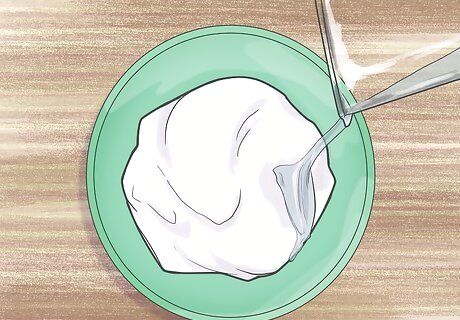
Add enough water to make the paste thin enough to apply as a mask. Drip a few drops of warm water into the paste, then stir to combine it into the other ingredients. Continue to add a few drops of water at a time until the paste reaches a good consistency for a mask. You want the paste to be thin enough to easily spread it on your face. However, you don’t want it to be so thin that it won’t go on evenly or it slides off your skin.
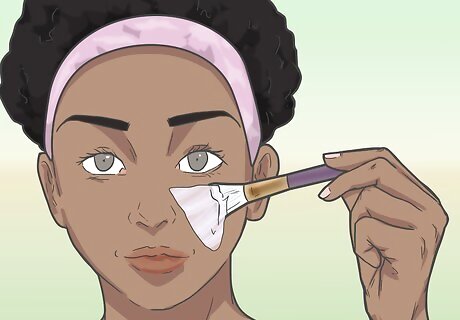
Apply the mask to your face with your hand or a brush. Use your fingertips to smooth the mask onto your skin for an easy option. If you have a face brush, use it to apply the mask over your face. After the mask is in place, wash your hands or the brush with mild soap and warm water. Be careful not to get the mask into your hairline or on your eyebrows. It will likely bleach your hair! If it gets on your hair, rinse it out immediately.
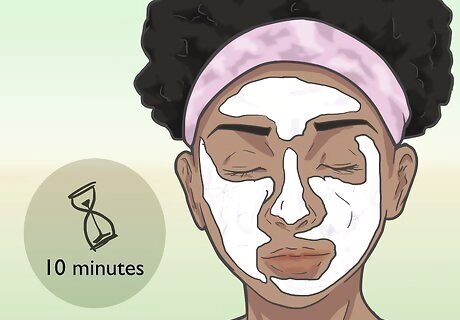
Let the mask sit for 10 minutes or until it dries. Set a timer for 10 minutes and relax while your mask does its job. Use your fingertip to test the mask every few minutes to see if it’s dry. If it dries before the 10 minutes, go ahead and wash it off. After the mask dries, it may dry out your skin if you leave it on longer. If you feel like your mask dried out too fast, add more water next time you do the treatment. This will help keep the mask moist for longer.Warning: If your skin is irritated or burning, wash the mask off your face immediately.
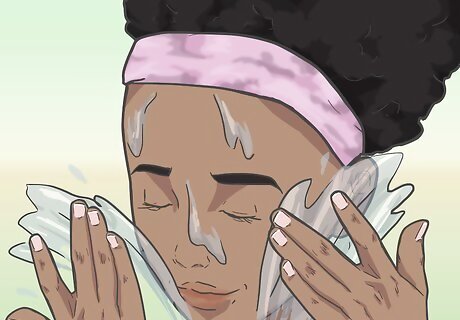
Wash the mask off with warm water. Splash the water onto the mask to soften it. Then, use your fingertips to gently wipe off the mask. After the mask is gone, splash your face with water to rinse it totally clean. Don’t rub your skin because it might cause irritation.
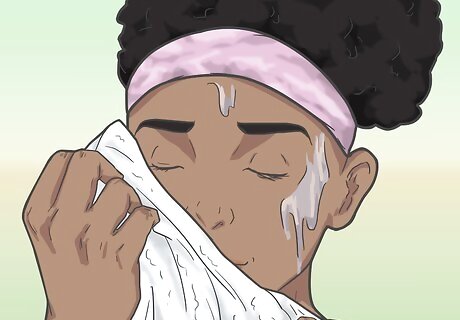
Pat your face fry with a clean towel. Lightly dab your face with the towel to blot away the excess water. Be careful not to rub because that may irritate your skin. If you have any of the mask left on your face, it may bleach the towel. Make sure you rinsed your face well.
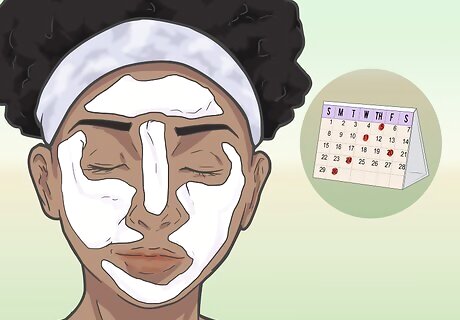
Use your mask once a week to lighten your skin over time. You might see results after one use. However, you’ll likely need to do weekly treatments for a month or longer to get the results you want. Repeat the treatment weekly until your skin looks lighter. Stop using the hydrogen peroxide treatments if your skin becomes red or irritated.
Hydrogen Peroxide
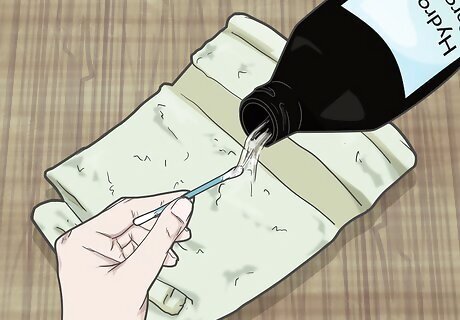
Soak a soft cotton swab with 3% hydrogen peroxide. Use regular 3% hydrogen peroxide that’s available over-the-counter for wound treatment. Apply the hydrogen peroxide to a cotton swab, which you'll use to apply the peroxide to your skin. Use a small cotton swab so you don’t accidentally get the hydrogen peroxide on your healthy skin.Tip: It’s best to test the hydrogen peroxide in a small area before you apply it to a large area that you want to treat. For instance, dab it onto a tiny spot on your jawline or on a small discolored spot. Then, let it sit for up to 10 minutes to see if it irritates your skin. If it does, wash your face immediately.
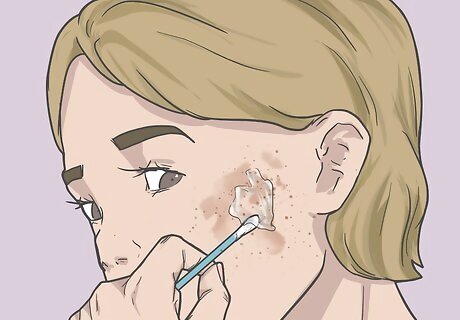
Dab the discolored area with hydrogen peroxide. Press the cotton swab onto the area you want to bleach. Cover the discolored area with hydrogen peroxide. Be careful that you only touch the skin you’re treating, not the healthy skin around it. If you get the hydrogen peroxide on the skin that isn’t discolored, it will also bleach that skin. This will keep your skin uneven.
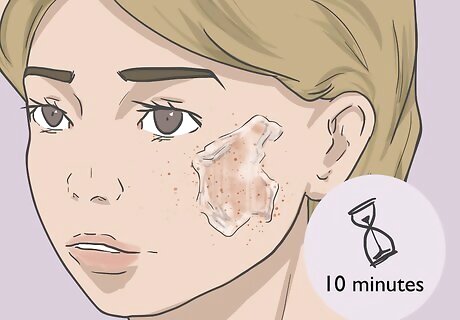
Let the hydrogen peroxide sit on your skin for 10 minutes. Set a timer for 10 minutes and relax while the hydrogen peroxide works. The hydrogen peroxide may dry on your skin, which is okay. If your skin starts burning or itching, rinse your face off immediately.
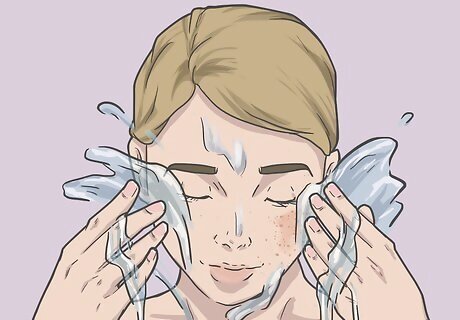
Rinse your skin clean with lukewarm water. Splash warm water over your face to wet it. Then, use your fingers to apply the water directly to the area you treated with hydrogen peroxide. Splash the spot several times to rinse away all of the hydrogen peroxide. Don’t leave the peroxide on your skin because it may cause burns or irritation.
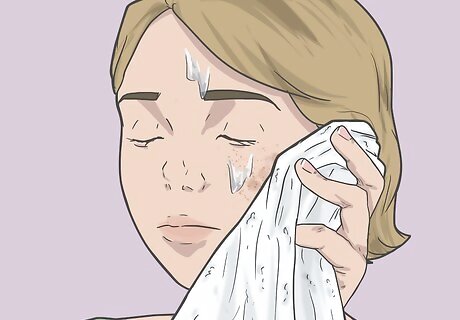
Pat your face dry with a clean towel. Use a clean towel so that it won’t get your face dirty and clog your pores. Gently blot your face to remove excess water. Don’t rub your face because it’ll damage your skin. Keep in mind that the hydrogen peroxide might leave bleach spots on the towel if there’s any left on your face.
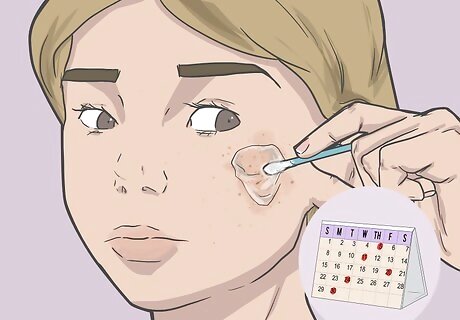
Repeat the treatment weekly until you get the results you want. You may notice results after 1 treatment, but it typically takes several applications to see results. Apply the hydrogen peroxide once a week until the dark spots look lighter. Stop using hydrogen peroxide if your skin becomes red or starts itching and burning. Don’t apply the hydrogen peroxide more than once a week. Otherwise, it may burn or irritate your skin.
Soap and Hydrogen Peroxide
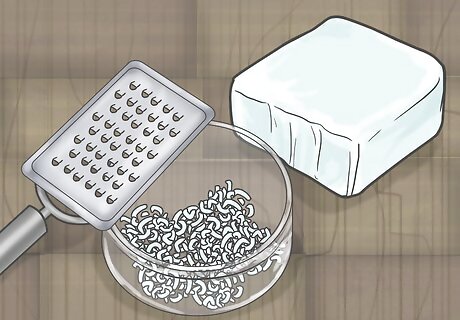
Grate 2 tbsp (30 g) of mild bar soap into a plastic container. Use an unscented, mild bar soap to create your skin lightener. Rub the soap on a cheese grater until you have about 2 tbsp (30 g) of soap. Alternatively, use a knife to cut up the bar soap. Add the soap to a plastic container. Smaller pieces make the soap easier to stir into the hydrogen peroxide.Tip: This method works great for lightening dark skin on your body, such as dark knees, elbows, or underarms.
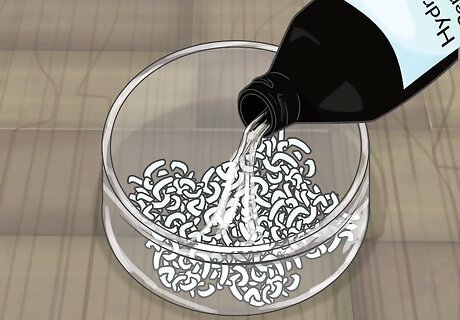
Add 2 US tbsp (30 mL) of 3% hydrogen peroxide to the container. Measure out the hydrogen peroxide using a measuring spoon. Then, pour the hydrogen peroxide into the plastic container with the soap. There will likely be some bubbling, and that’s okay. You can also use a 1/8 measuring cup to get the right amount of hydrogen peroxide. A 1/8 cup contains 2 US tbsp (30 mL).
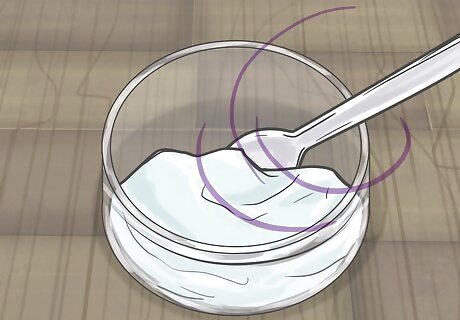
Use a plastic spoon or wooden spatula to create a paste. Stir the soap and hydrogen peroxide together using a plastic or wooden utensil. Keep stirring until you have a paste. You’ll likely see a lot of foaming as you stir, which is normal.Warning: Don’t use a metal spoon to mix the soap and hydrogen peroxide because the metal may have a chemical reaction with the hydrogen peroxide.
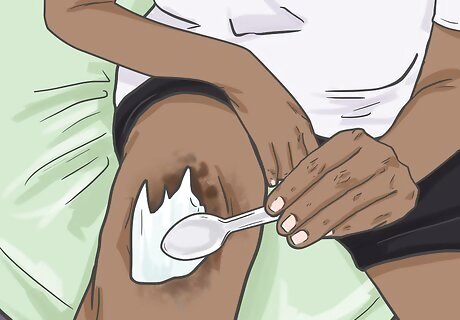
Apply the paste to your dark skin patch using the spoon or spatula. Scoop out a small amount of paste using your plastic spoon or wooden spatula. Then, slather the paste over your dark skin patches. Apply a thin, even layer of paste over the entire area you want to treat. For instance, you might apply the paste to your dark knees or dark underarms. Make sure you don’t get any paste on skin you don’t want to bleach. The paste will lighten any skin that it touches.
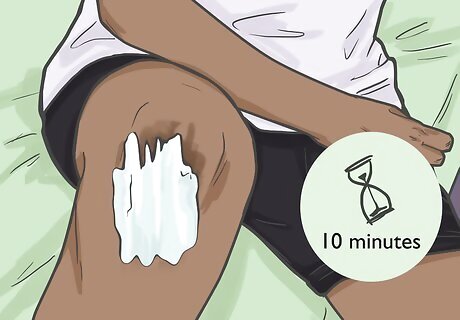
Allow the paste to sit for 10 minutes. Set a timer for 10 minutes and relax while the paste works. Stay as still as possible so that your skin doesn’t move or crease while the paste is working. This gives the hydrogen peroxide time to work. Don’t leave the paste on your skin longer than 10 minutes because it might burn your skin.Warning: If your skin starts to sting or itch, wash the paste off immediately. If you decide to use the paste again, stick to a shorter amount of time so your skin doesn’t get irritated.
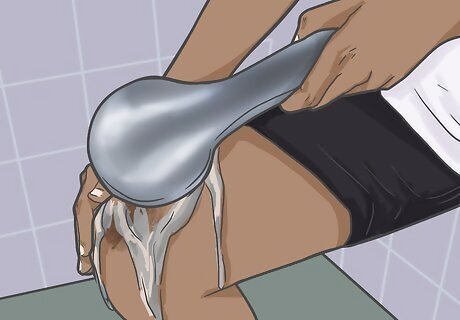
Rinse off the paste using warm water. Splash warm water to the paste to soften it. Then, apply more water to your skin to help wash away the paste. Use your fingers to get all of the paste off. Try not to scrub your skin, as this can cause irritation. Be as gentle as possible when you're washing off the paste.
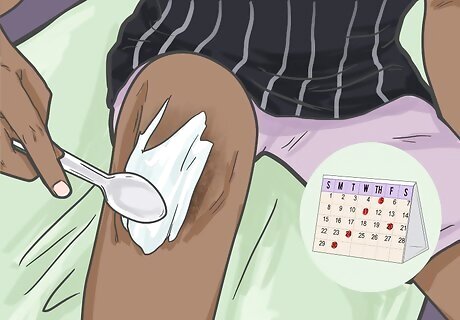
Use the treatment as often as once a week until your skin lightens. You might see results after 1 treatment, but you likely won’t see significant results. Repeat the treatment once a week until you’re happy with the look of your skin. If your skin becomes irritated, stop using the hydrogen peroxide treatments immediately. You’ll likely see significant results after 1-2 months. Leslie Baumann, Skin Care Specialist It's true that some skin lightening solutions use concerning chemicals like hydroquinone and hydrogen peroxide. However, it's vital to remember these ingredients are not without significant risks. Hydrogen peroxide, for instance, is an aggressive substance that can lead to skin irritation and damage. Before attempting any at-home treatments, it is always best to consult a dermatologist. Your skin is a vital, sensitive organ that warrants thoughtful care. When considering skin lightening, be sure to weigh all options cautiously.

















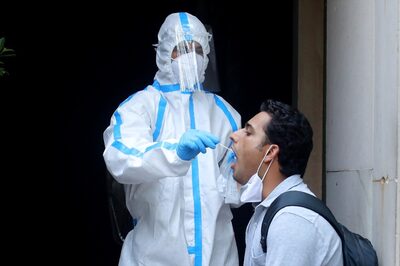
Comments
0 comment